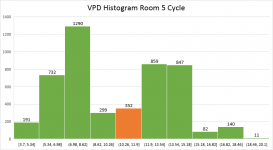growingcrazy
Well-known member
I just asked a question. But to answer your questions.
1)I do sap in the field.
2)I don't send samples yet, that's why I asked
3)1:1 probably not but its working in the right direction
So once again but more specifically is there a lab in CO, CA, OR, WA that will take samples from average joe?
How do you like your sap meters? Would you recommend spending the money on them? Another question about them... I have read a couple articles on performing the AA@8.2 with a :xx minute shake and then testing the solution with meters. If anyone has done this, how do the numbers compare to that of Spectrum or any lab?
Sorry I didn't answer your question. I have not found a lab in Mi. I can't answer about the west coast. Snickels method would work fine with an in-state lab. That is, if they don't kick the sample back.
As of now, I only check brix levels in tissue. I am considering going to sap meters.


